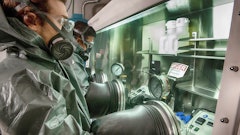
Knowing where you want to go and how you want to get there is critical to any product development campaign. And while these and other considerations are the important overriding driver for a new or redesigned product, so is the impact that it will have on the company’s bottom line. Validation is a proven key to mitigating potential risks during the product development process.
From a relatively simple redesign to a new product launch, on- and off-highway equipment manufacturers must weigh many factors.
- Quick-to-market recoups development costs faster, but is quality sacrificed?
- How important is innovation? How much more time/money must be invested to validate multiple designs?
- Do we possess the required tools/technical competency to validate designs?
- Are warranty claims exceeding expected limits?
- Is validation cost the overriding concern?
- What new or coming regulations must be considered?
Fundamental Validation Approaches
Today there are two fundamental approaches for validating products related to equipment or specialty vehicles. Each is proven, effective and technically sound, and has its advantages:
- Test-Centered Validation - validation through the testing of physical prototypes
- Simulation-Centered Validation - validation through testing digital prototypes
This is not to suggest that physical testing and simulation are mutually exclusive. Many larger organizations employ both. In fact, any legitimate product validation approach should contain elements of each.
Test-Centered Validation
Test-centered durability validation is rooted in capturing and analyzing physical performance data as the vehicle/equipment is put through operation. Data is collected by instrumenting the vehicle with strain gauges and accelerometers to measure deflection or quantify how the system, subsystem or component reacts under loads and conditions.
Data is collected in numerous ways ranging from a controlled laboratory environment, a representative environment, or in the field under typical operating conditions. Tests vary depending on system, sub-system or component validation.
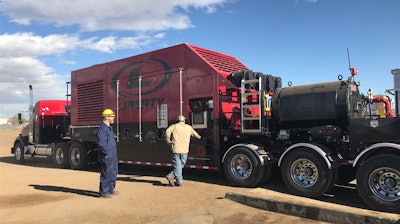 Test-centered validation offers the advantage of physically seeing, touching and measuring the products being validated.Six D Testing & Analysis
Test-centered validation offers the advantage of physically seeing, touching and measuring the products being validated.Six D Testing & Analysis
System Level Durability Validation
On a systems-level (and with certain sub-systems), hydraulic test rigs recreate usage conditions within a laboratory or controlled environment. System-level test-centered validation generally comes in two forms: Durability Rig Testing and Extended Operating Testing.
Durability rig testing
System-level durability testing typically utilizes a hydraulic test rig within a laboratory. This entails subjecting the system to forces over an extended period of time recreating field conditions. This allows long-term effects to be measured in a relatively short period of time.
Finite Element Analysis (FEA) determines the location of strain gauges and accelerometers. Loads and responses from baseline testing defines operating environments and associated durability parameters. The process moves to the development of drive files to control the test rig to recreate forces to which the system will be subjected. After going through its paces on the test rig, the system is inspected for cracks and other structural damage.
Extended operating testing
Another popular validation method is the continuous operation and testing of a system within representative environments. This includes a test track, proving grounds, in-field usage and so on. Similar to hydraulic rig testing, strains and accelerations are measured to determine the extent of accelerated damage. Analyzing large amounts of accumulated data provides insight into product performance and a means to objectively validate the design.
Subsystem and component validation
When separated from the system, each sub-system or component may perform as designed. But sometimes when incorporated into a system, interaction with neighboring components/sub-systems introduces unexpected forces or vibrations for which the component/sub-system was not designed to withstand.
To measure the performance within the context of the system, forces and/or accelerations are obtained from system-level tests. These forces are replicated using a hydraulic or electrodynamic shaker during the testing of components or sub-systems.
Advantages
An advantage to test-centered validation is the ability to physically see, touch and measure products being validated. At the same time in-field testing allows products to be validated against, not only anticipated customer usage, but for anomalies and other rare events outside the anticipated scope of operation. This allows vehicle/equipment designs to meet a range of possibilities.
On the downside, complex loading is not easily applied to test rig testing. Additionally, physically testing multiple prototypes can be time-consuming, labor-intensive and costly. For truck applications, costs related to rigs, track time, labor, equipment, along with modeling and analysis must also be taken into account. Consequently, test-centered durability validation methodologies are generally reserved for high-volume, high-value, high-risk situations.
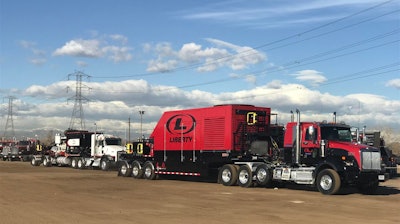 Choosing the right validation process when designing a vehicle or piece of equipment helps to mitigate warranty claims while ensuring all design requirements are met.Six D Testing & Analysis
Choosing the right validation process when designing a vehicle or piece of equipment helps to mitigate warranty claims while ensuring all design requirements are met.Six D Testing & Analysis
Simulation-Centered Validation Approach
While a simulation-focused approach is heavily reliant on FEA, there remains a need for physical prototype testing, albeit in a very limited capacity. Nonetheless, this digital approach is fast, reliable and inexpensive when compared to Test-Centered Validation.
Testing data (often from competitive brands) provides approximate loading environments. For trucks and off-highway equipment this might include collecting data from the field via unattended testing. Collecting data over long periods of time provides an understanding of both common and rare (but significant) loads that may be encountered over service time.
The more one understands how products will be used by the customer, including the loads and response mechanisms, the more effective the simulation. The better the simulation, the less rework, time lost, and costs involved.
Data Collection & Analysis
Effective FEA model validation requires representative, proportionate, and extreme (within reason) forces are applied to the model. This ensures the model is evaluated against accurate operating parameters to which the final product will be subjected.
These forces are collected manually through testing physical prototypes, current model or competitive vehicles. This generally includes affixing accelerometers and strain gauges to key locations throughout the vehicle and putting the equipment through operation. It is recommended that data be collected both while in normal service and proving grounds testing. In this way forces, acceleration, twist, pitch and strain are measured for each key location.
In the next phase, field test data is compared to that collected in the field or proving grounds to qualify an accelerated durability test cycle. Data from load cells is compared to strain responses to identify significant load cases representing vehicle usage. These load cases (e.g. body twist, pitch, strain, etc.) are ranked based on damage calculations. Similarly proving ground data is associated with field test load cases and scaled based on damage calculations. A set of accelerated durability proving ground events is defined and ranked from these comparisons.
Engineering analysis (simulation) software is used to run an accelerated durability simulation. This helps predict proving ground test performance. Static and inertial load cases are developed from field and proving ground data. This includes the association of load cases with the measured strain responses and is helpful for reading FEA model correlation activities.
Although static FEA analysis is likely sufficient, test results sometimes indicate a need to address system dynamics. In these cases, a dynamic model, predicting significant low frequency vibration modes, is created and correlated to modal testing.
Advantages
Simulation-Centered Validation accelerates product development and increases innovation. Evaluating design changes through modeling and simulation allows multiple design iterations to be explored quickly and without the time and expense of building and testing numerous physical prototypes. Organizations driven by time to market or innovation or those with a limited budget will benefit from this approach.
What method is best?
These validation approaches can be equally effective; and while both contain elements of testing and simulation the emphasis and roadmap to validation is very different. Take the time to scrutinize validation resources at your disposal, identify business drivers and weigh the pros and cons of each approach.

![Deutronic Dbl 1903 14[1]](https://img.oemoffhighway.com/files/base/acbm/ooh/image/2023/10/Deutronic___DBL_1903_14_1_.6528568875a4e.png?auto=format%2Ccompress&fit=crop&h=100&q=70&w=100)
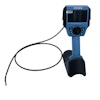

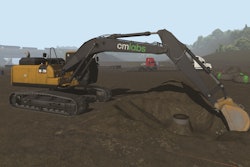
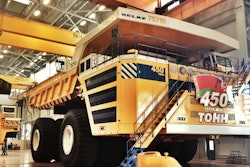


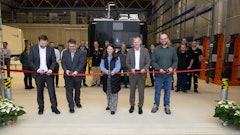
![Deutronic Dbl 1903 14[1]](https://img.oemoffhighway.com/files/base/acbm/ooh/image/2023/10/Deutronic___DBL_1903_14_1_.6528568875a4e.png?ar=16%3A9&auto=format%2Ccompress&fit=crop&h=135&q=70&w=240)







